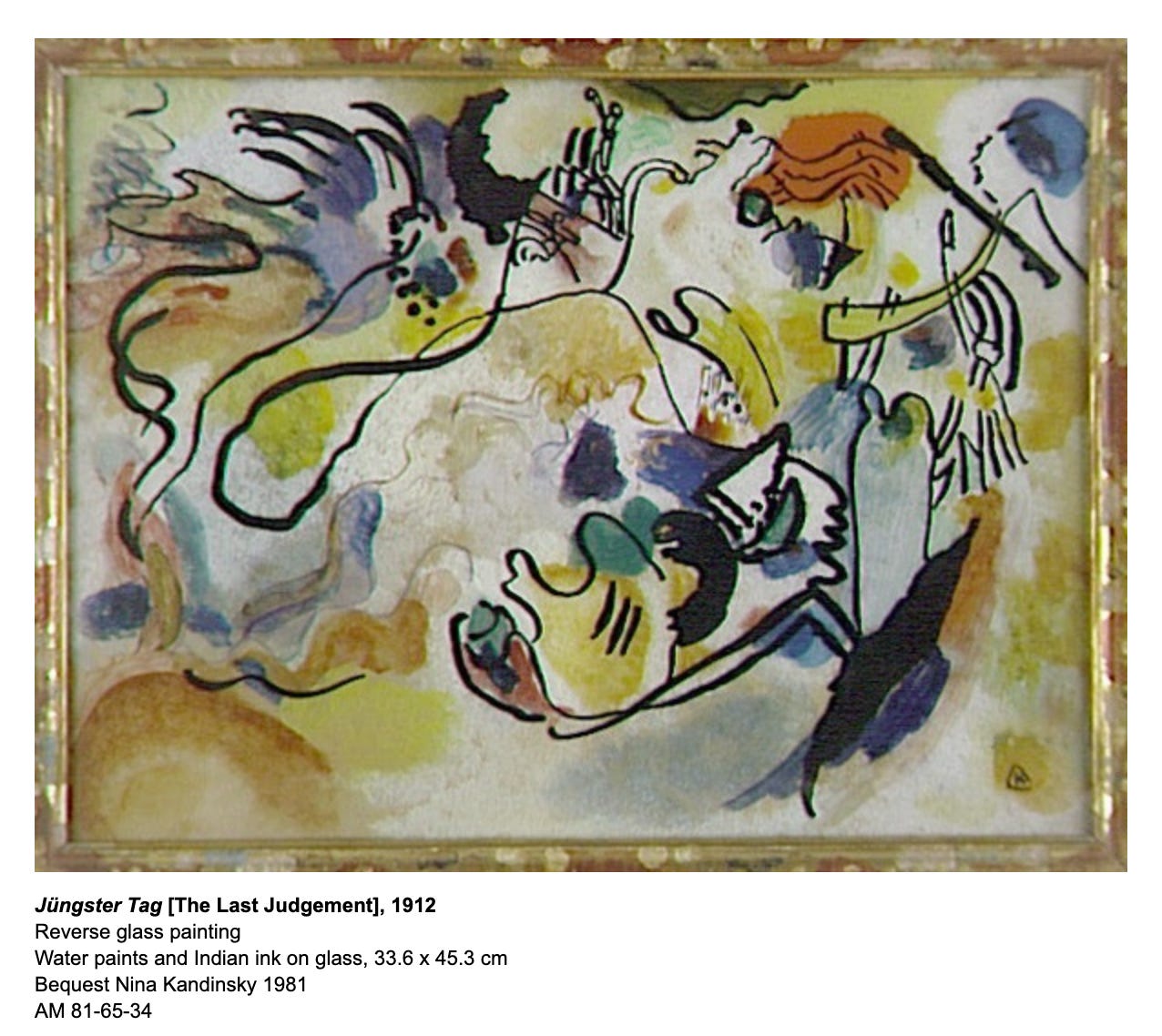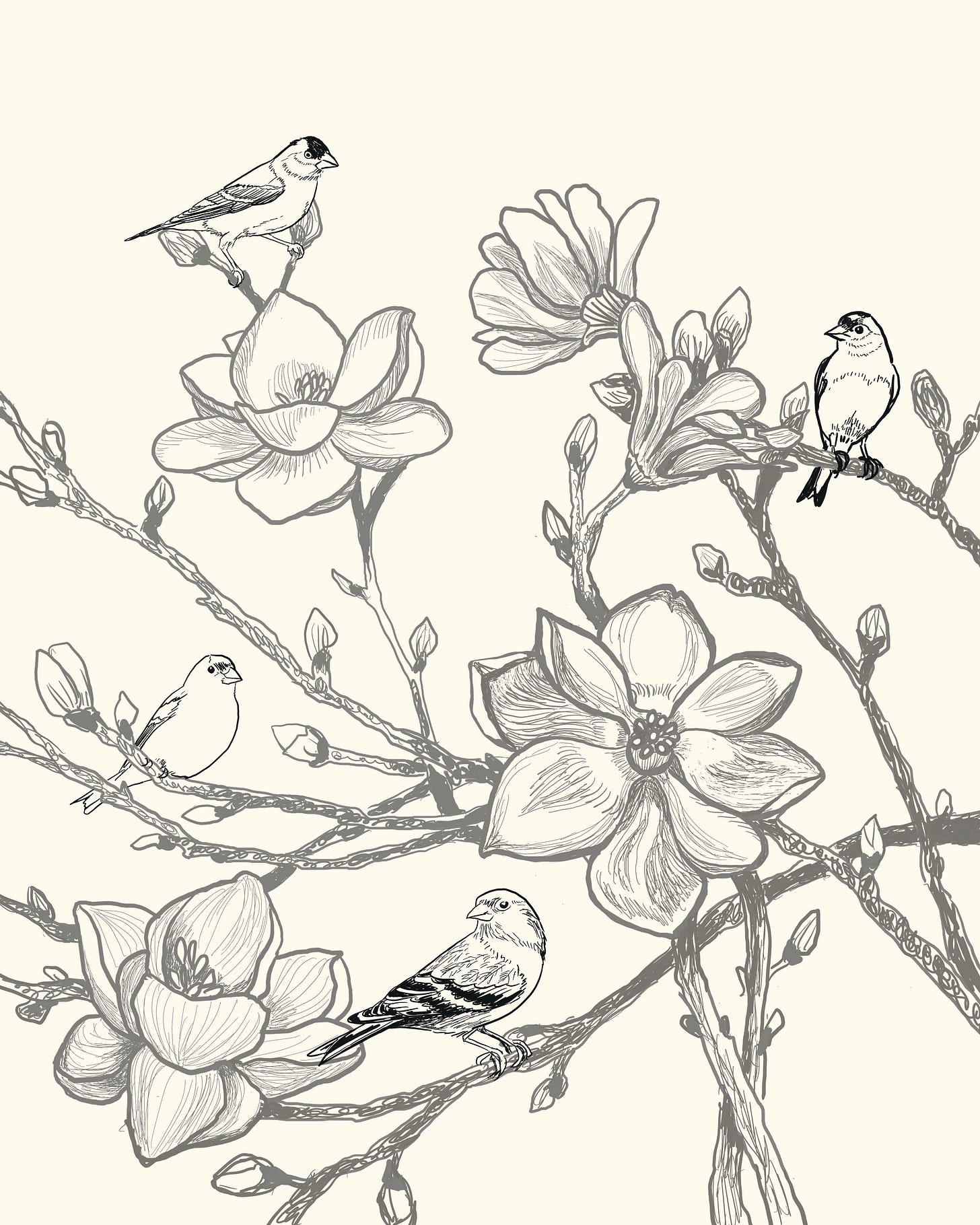Process Keeping Passion Alive
From acrylic to reverse glass painting - A look into how process and materials keeps my passion for birds alive in the art.
As you probably know from my many posts and paintings about birds, I love to share my enthusiasm for these little backyard friends in my art. From paintings to cross-stitch, I have found ways to express the joy, comfort, and beauty they bring to my life. And, I’ve found many ways to play with and explore the limits and possibilities of different media as a means to stay engaged.
Acrylic Bird Paintings
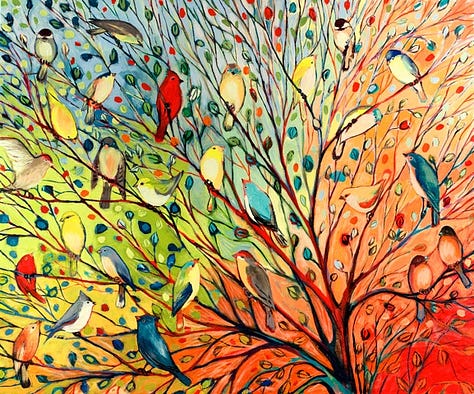
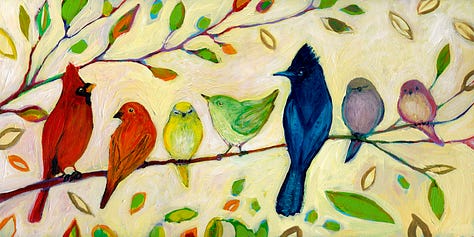
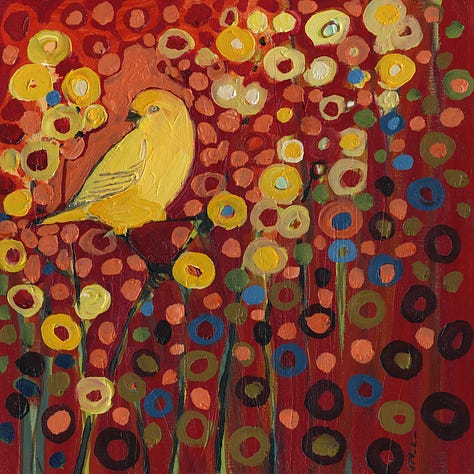
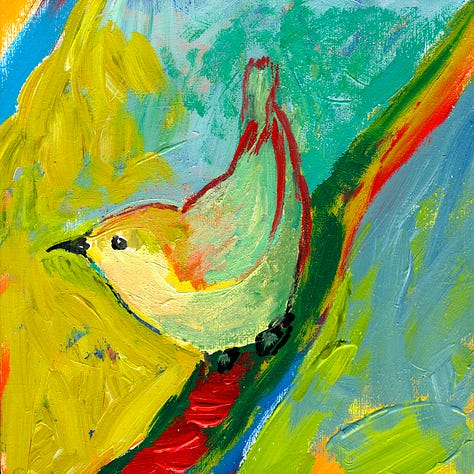
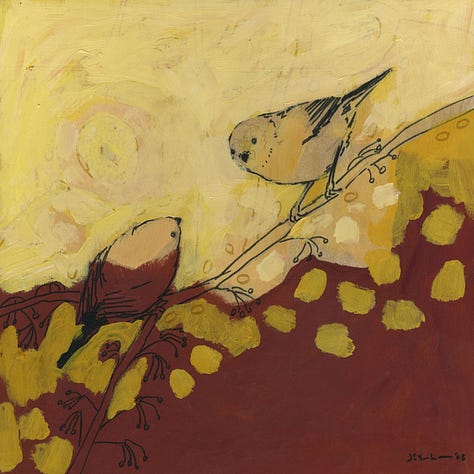

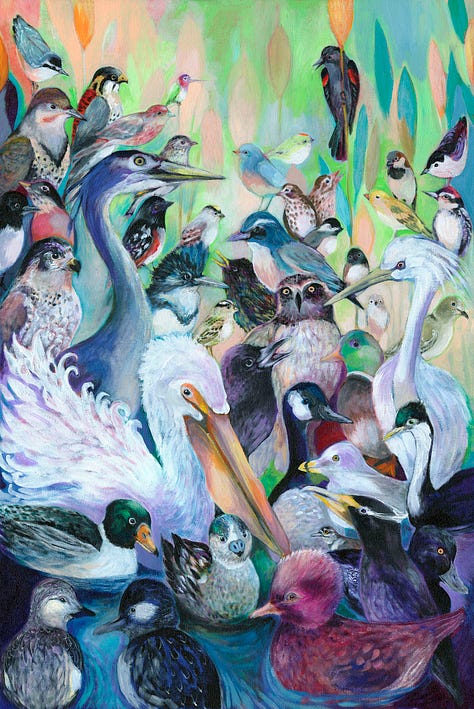
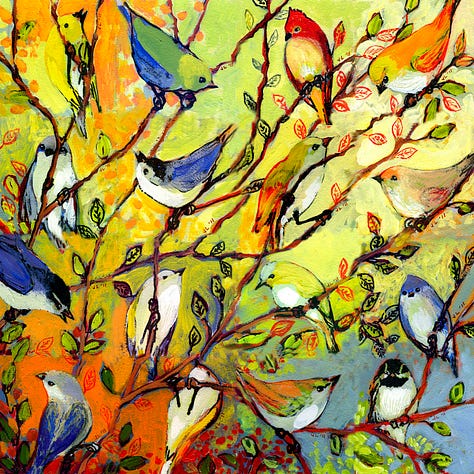
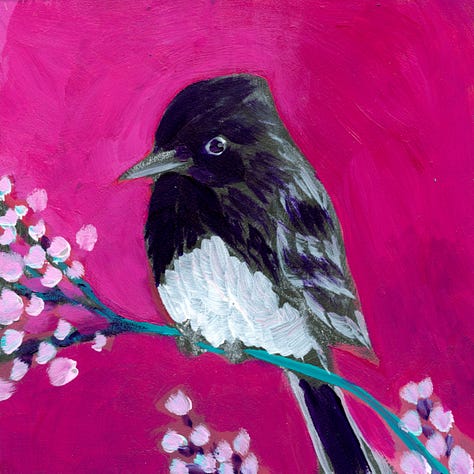
(27 Birds, A Flock of Many Colors, Canary in Red, 51 Birds No. 11, A Short Pause, The NeverEnding Story Final Chapter No. 107, 44 Birds, 16 Birds, Black Phoebe)
Oil Painting & Mixed Media Collage
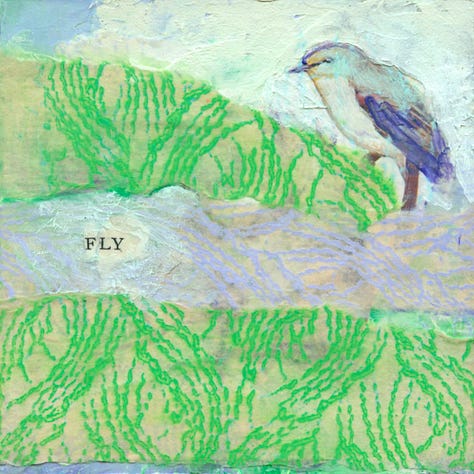
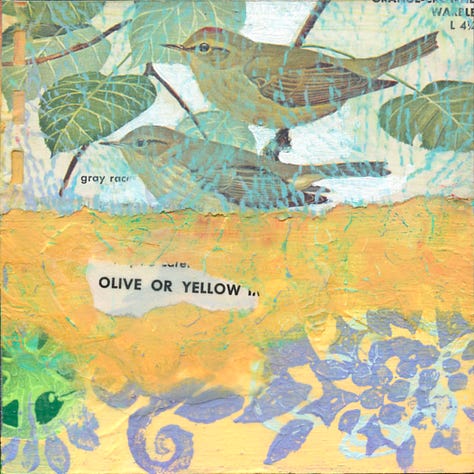
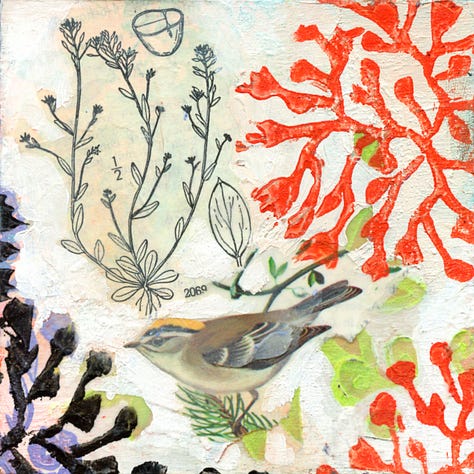
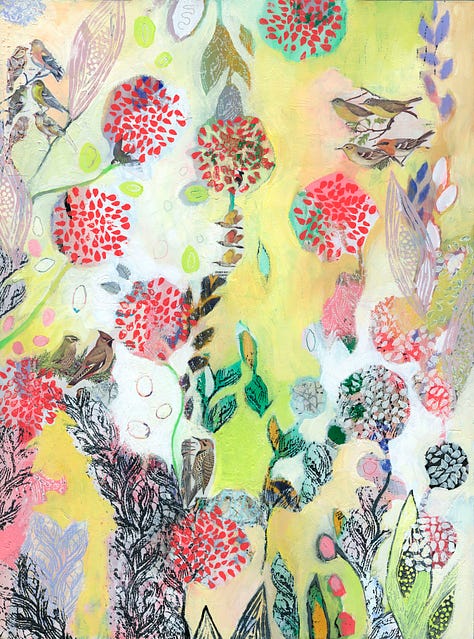
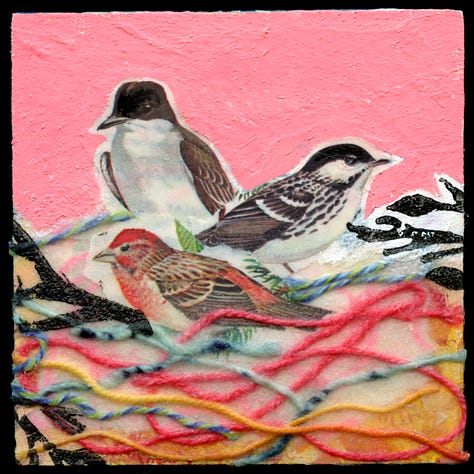
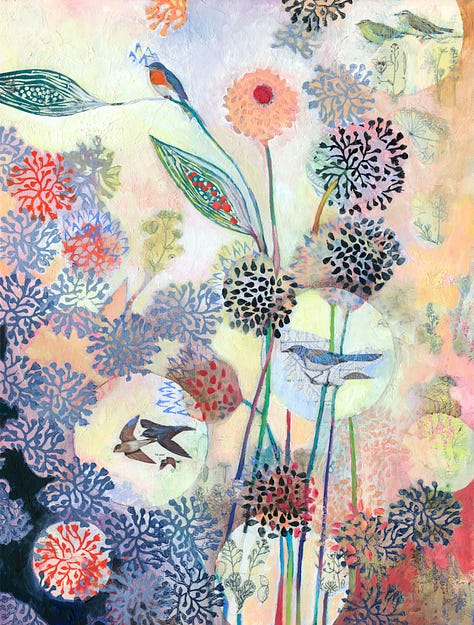
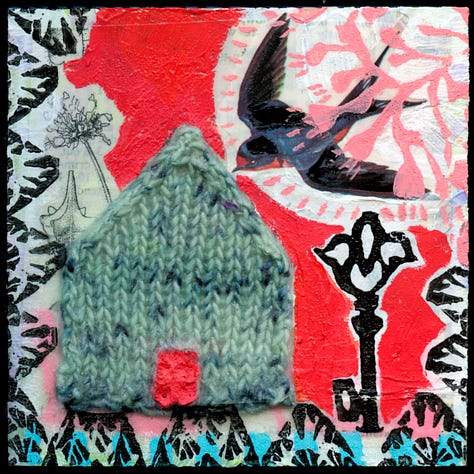
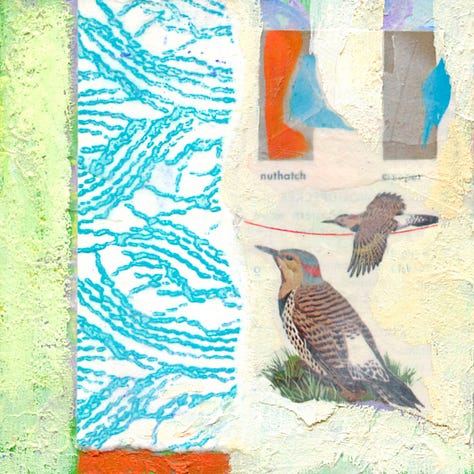
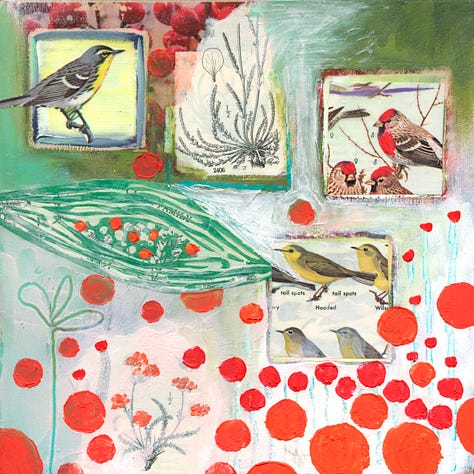
(Sampler No. 5, Sampler No. 6, Sampler No. 12, A Harmony Breathes in a Moment’s Pause, Left Out, Lifting Up and Letting Go Into the Light of Song, Keeping Watch, Samples No. 12, Picking Berries on Borrowed Time)
Coloring Books, Cross-Stitch, and Ukuleles
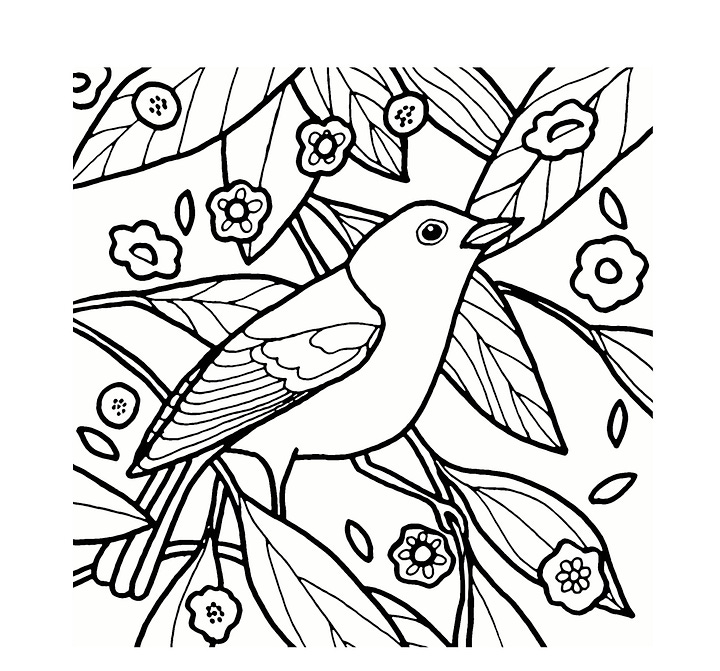
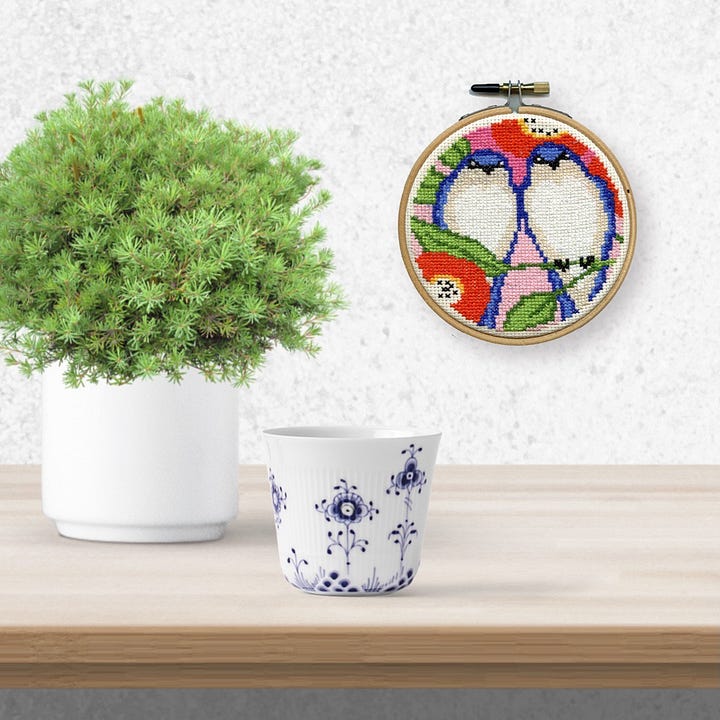
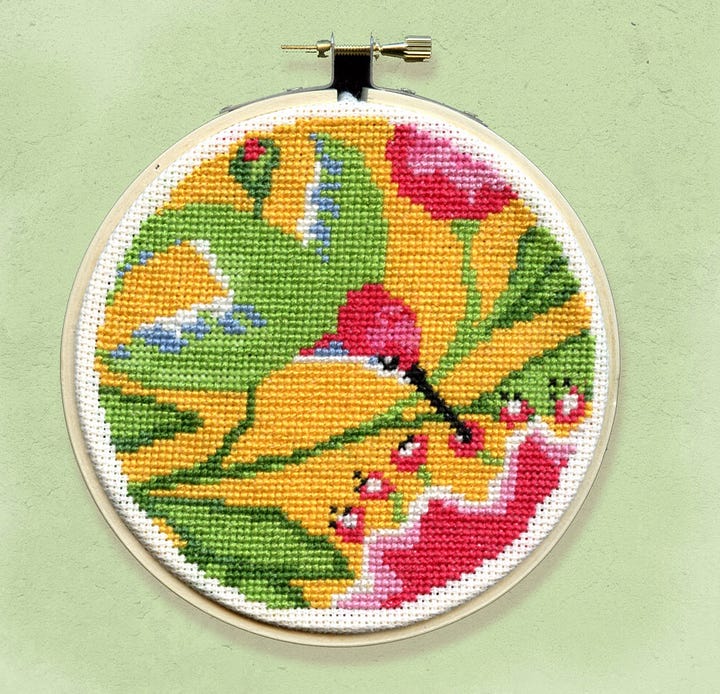
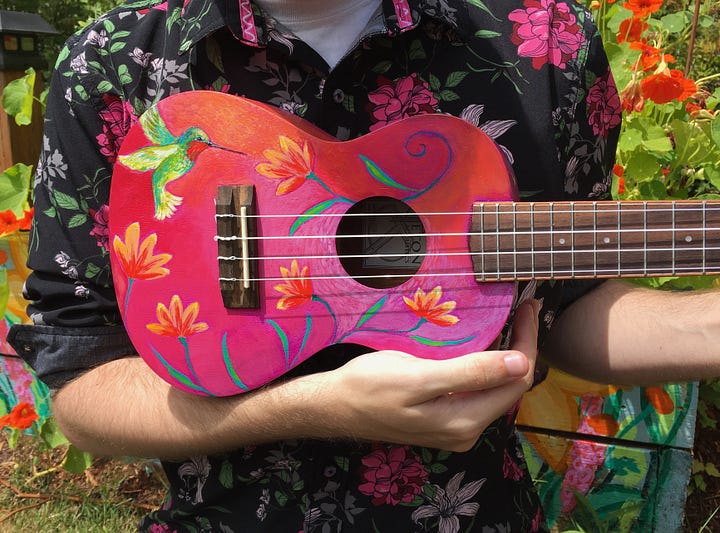
The many Series celebrating my love of birds
(51 Birds series of 50 painted blocks; Birds & Butterflies series of 15 painted blocks; Chintimini Trees No. 1 & 2 series of 60 painted blocks; Wish Upon a Rainbow Tree series of 24 painted blocks; and finally, The NeverEnding Story series totaling 304 painted blocks)
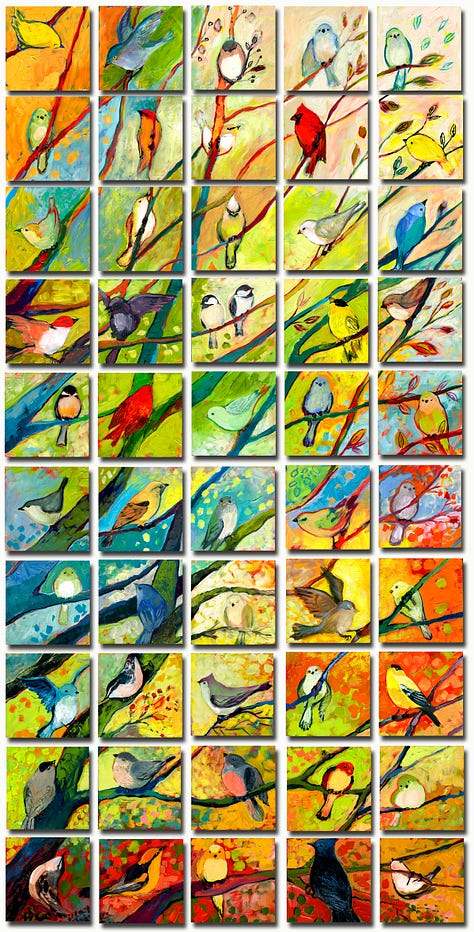
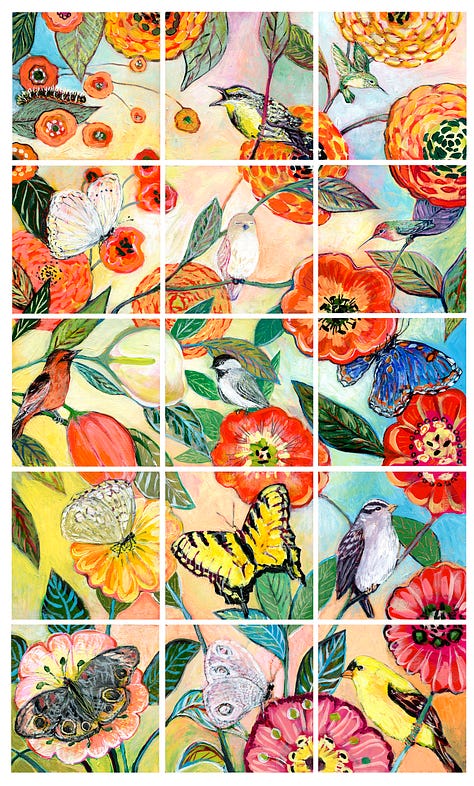
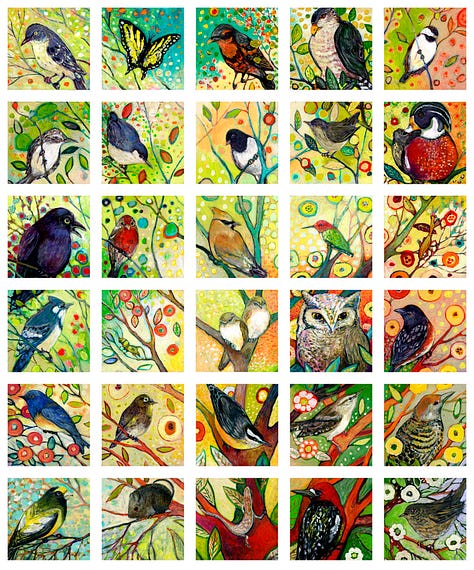
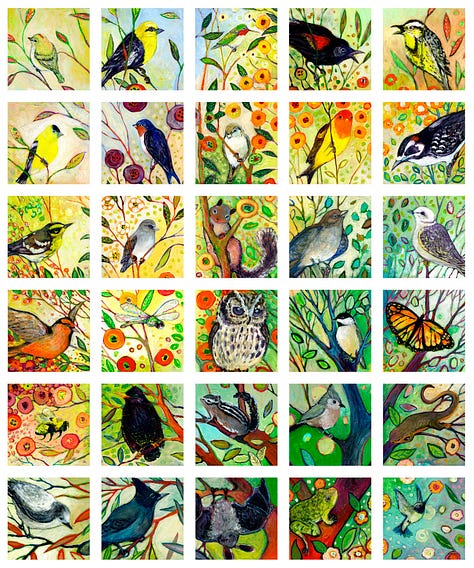
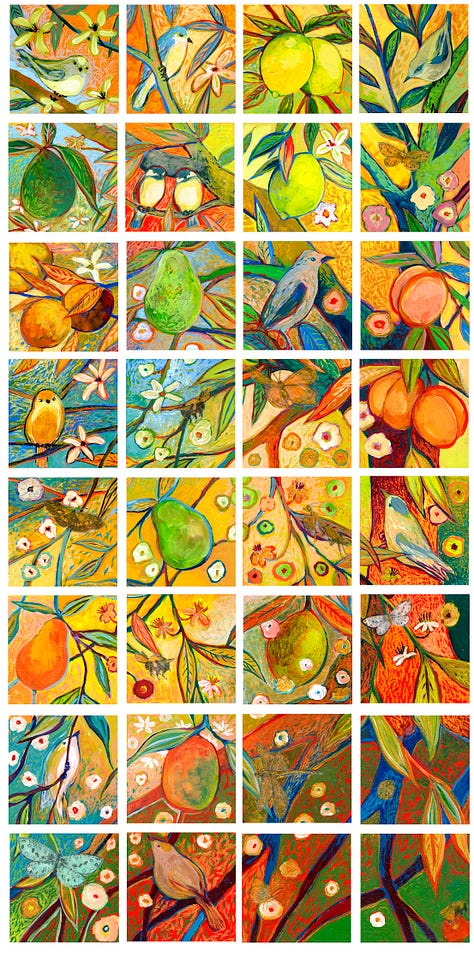
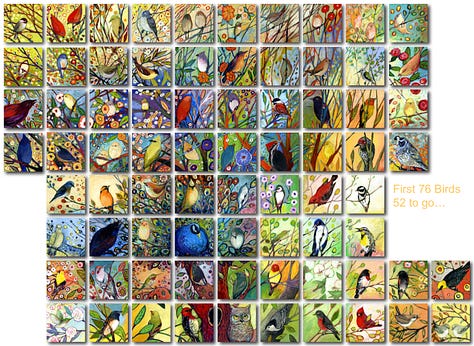
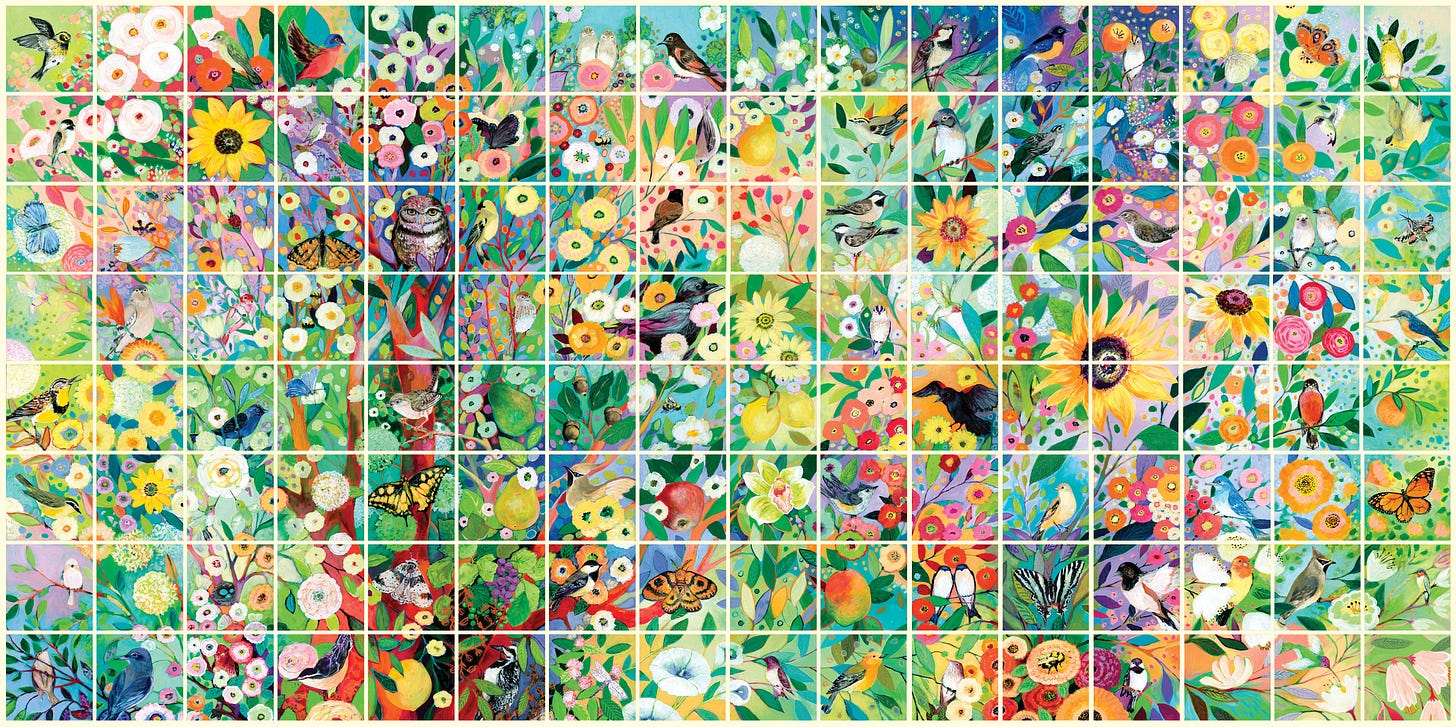
In 2018, after I sold the last block from my NeverEnding Story series, I swore off painting birds. It took an immense amount of energy and commitment to finish the series and I just couldn’t, at that time, see myself wanting to paint more birds. However, a few years later, in the midst of a pandemic, I found my footing once again by using the annual Great Backyard Bird Count to inspire new paintings in 2021 and 2022. And while I enjoyed creating those paintings, I also felt I needed something more to keep me engaged in sharing these little birds I love so much.
It was the summer of 2022 that I was re-introduced to the art of reverse glass painting with the work of Saul Yurivilca. And then, for 2023, I designed and received my first tattoo inspired by the request of my youngest child which I coopted into an opportunity for the two of us to bond over a shared design. Both these occurrences combined to inspire a new kind of engagement with my bird art. I wanted to improve my line work and observation skills to create more tattoo designs (specifically with birds and flowers), and in doing so, thought it would be fun to use these designs as a basis for reverse glass paintings.
A Brief History of Reverse Glass Painting
Reverse-glass paintings — where an image is painted onto glass to be viewed from the other side — originated as a technique used for religious works in medieval Europe, which then spread to Asia via trade routes.
~ The Japan Times: Reverse Paintings on Glass: The 200 Years of Dazzling History
The art form, with its ability to deliver lustrous gold-infused designs, reached its height of popularity in the latter half of the 16th century with the influence of Byzantine glassmakers. Furthermore, its ability to transcend the demands of “high art” in a process that allows for replication (by using line art as a basis of the final design which can be copied again and again by placing it under the glass being painted), allowed it to be more widely distributed and owned. The technique traveled from Venice, Italy to China, Japan, Senegal, India, and beyond - later reaching a new audience in folk paintings from Austria to Slovakia and then to tinsel paintings which became popular in America from 1850-18901. The art form transformed again as it was later explored by such artists as Vassily Kandinsky and Rebecca Salsbury Stand James who brought modern painting materials and techniques to the process.
The technique of reverse glass painting, which consists in painting on the underside of a sheet of smooth or corrugated glass, was discovered by Kandinsky in the summer of 1908. The painter held a deep interest for this typical form of Bavarian folk art traditionally practised in families – and to which he devoted himself with his entourage – even undertaking research to discover its origins.
This technique interested him not only as an expression of popular culture, but also because it enables effects of transparency, brilliance and moiré impressions, depending on the paintings used. Between 1909 and 1913, he completed 33 reverse glass paintings.
~ Center Pompidou on Vassily Kandinsky
As I sought out more examples of reverse glass paintings, I became particularly interested in the work of Rebecca Salsbury Strand James. A close friend of Georgia O’Keeffe, Strand-James is an often-forgotten figure in the art history canon. (I recommend this video from the Georgia O'Keeffe Museum’s “Mornings with OKeeffe” series of lectures for more about this artist.)
What I find particularly interesting about her life and work is how she straddled her position as an arts supporter, career woman, wife, and friend to many influential artists with a creative impetus leading her to materials and techniques traditionally reserved for folk, or “domestic” art. She persevered where others would not and created impressive, often personalized, bodies of work in both reverse glass painting and traditional colcha embroidery. She pursued a personal art-making path which I find showcases her independence and strength as a person and artist.
In my own personal art journey, I find myself continually trying to form this bridge between high art and craft in the work I create. In the materials I choose, the techniques I use, and the subject matter I explore - I continually see the lines blur as I try to promote a more inclusive, interlacing view of the art vs. craft debate. (But, for now, I’ll leave that debate for another day.)
Birds, Flowers, and Reverse Glass Painting
In the meantime, I am thoroughly enjoying a happy return to sharing my enthusiasm for birds in my art. To have a new technique to literally draw out my passion is the surprise I didn’t know I needed for 2023.
Right now I’m finishing up my first attempt at turning digital drawings of my designs into simple oil paintings on glass.
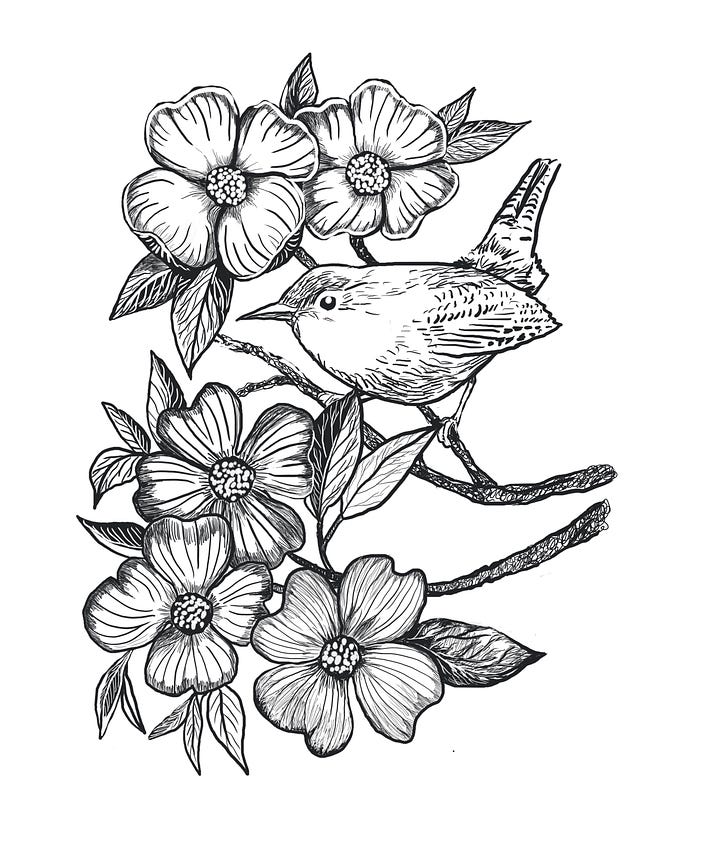
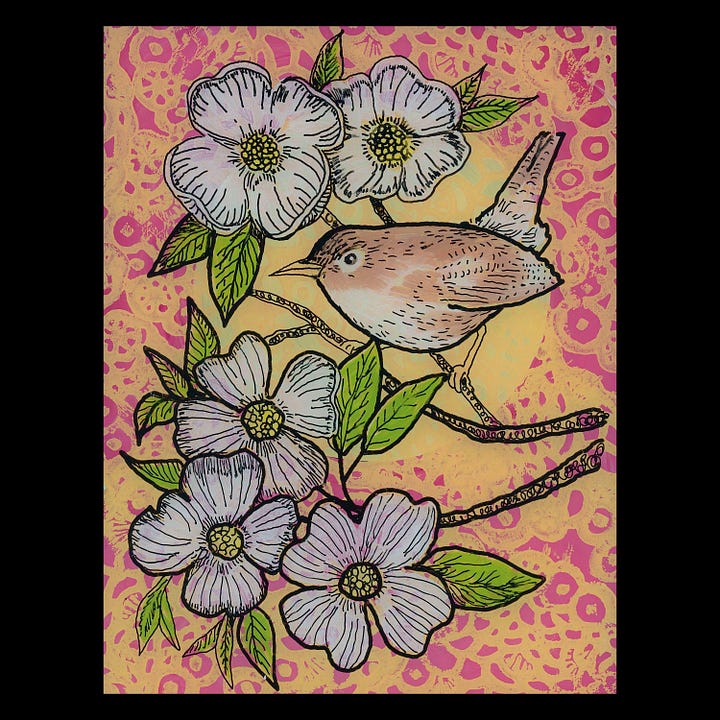
A digital drawing (left) vs. reverse glass painting (right). Details of my process are available to subscribers of my Studio Notes Patreon Page)
Employing the traditional method of first layering ink lines under the details and then the background of the painting - I find designing the image first on my iPad as a digital drawing a fitting method for the process. Using and learning new tools and techniques keeps the inquisitive artist side of me alive while I work with shapes and colors that are comfortable and familiar. It provides me the opportunity to find new ways to share my passion for these sweet little birds while satisfying my exploratory artistic needs.
My next painting attempt will be based on this larger drawing of multiple birds in a magnolia tree.
From there - who knows? A new tattoo? Window panes?
I’ll let the birds lead my way.
~ Jennifer
folkartmuseum.org (https://folkartmuseum.org/exhibitions/foiled-tinsel-painting-in-america/)


